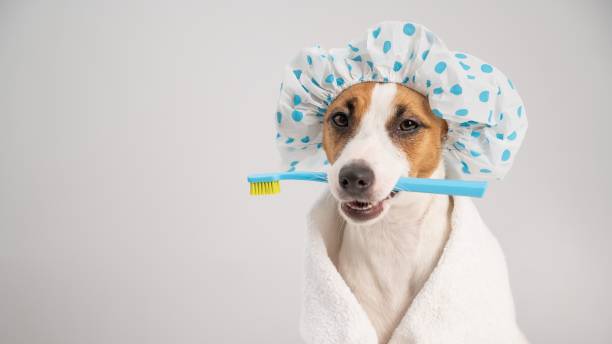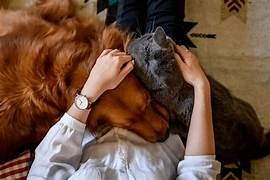
Sparkling Smiles: The Importance of Dental Hygiene in Small Pets
Maintaining dental hygiene in small pets is crucial for their overall health, preventing pain, disease, and costly vet visits through proper care, regular checkups, and informed owner practices.
🐶 Pet Star
28 min read · 28, Jun 2025

Introduction
Small pets—rabbits, guinea pigs, hamsters, ferrets, and other tiny companions—are beloved members of many households. Despite their size, they face complex dental health challenges that can profoundly affect their well-being. Unlike dogs and cats, whose dental needs are widely discussed, small pets often suffer in silence from dental disease, impacting their quality of life.
This article explores the critical role dental hygiene plays in the health of small pets. It covers anatomy, common dental issues, prevention techniques, and practical care strategies. We will also incorporate expert insights and statistics to highlight why every small pet owner should prioritize dental care.
Understanding Small Pet Dental Anatomy
Unique Dental Structures
Small pets have teeth that grow continuously throughout their lives—a characteristic known as hypsodont dentition. This natural adaptation requires consistent wear through chewing fibrous foods, or else teeth can overgrow, causing pain and dysfunction.
- Rabbits and Guinea Pigs: Possess large, ever-growing incisors and cheek teeth essential for grinding tough plant material.
- Hamsters and Gerbils: Have smaller, sharp incisors but similar growth patterns.
- Ferrets: As obligate carnivores, their teeth resemble those of cats, designed for tearing meat but still vulnerable to plaque buildup.
How Teeth Function and Grow
The rate of tooth growth varies by species, with rabbits’ incisors growing about 2-3 mm per week. If not properly worn down, overgrowth can lead to malocclusion—a misalignment causing difficulty eating, mouth sores, and infections.
Common Dental Problems in Small Pets
Malocclusion and Overgrown Teeth
Malocclusion is one of the most common dental issues in small pets, particularly rabbits. Misaligned teeth don’t meet properly, leading to overgrowth and sharp points that can injure the tongue and cheeks.
- According to a 2017 study published in Veterinary Record, nearly 25% of pet rabbits suffer from some degree of dental malocclusion.
Dental Abscesses and Infections
When teeth become infected, abscesses can form, causing swelling, pain, and systemic illness. These infections often require veterinary intervention and sometimes surgery.
Gingivitis and Periodontal Disease
Plaque buildup leads to gum inflammation, which can progress to periodontal disease—destroying tissue and bone around teeth. While more common in carnivores like ferrets, small rodents are not immune.
Tooth Fractures and Wear
Due to chewing hard objects or improper diets, small pets can suffer from tooth fractures, which expose sensitive pulp and cause severe discomfort.
Why Dental Hygiene Matters: Health Beyond the Mouth
Pain and Eating Difficulties
Dental pain affects appetite and nutrition. Studies show that small pets with dental disease often reduce food intake, leading to weight loss and malnutrition.
Secondary Health Complications
Bacterial infections in the mouth can spread to vital organs such as the heart, liver, and kidneys. This systemic risk highlights the importance of oral hygiene.
Behavioral Changes
Painful teeth can cause irritability, aggression, or withdrawal in small pets—signals owners may miss if unaware of dental disease signs.
Prevention: The Foundation of Dental Health
Diet and Nutrition
Proper diet is paramount to dental health. High-fiber diets encourage natural tooth wear and maintain gut health.
- Rabbits and Guinea Pigs: Need unlimited access to hay—timothy, orchard grass, or oat hay—to grind teeth effectively.
- Rodents: Require chewable pellets and safe wood or mineral blocks to promote tooth wear.
- Ferrets: Should have high-protein, low-carb diets to reduce plaque accumulation.
Environmental Enrichment
Providing chew toys and safe materials to gnaw helps small pets manage tooth length naturally and reduce boredom-induced destructive chewing.
Daily Dental Care Routines for Small Pets
Brushing and Cleaning
Brushing small pet teeth can be challenging but is beneficial, especially for ferrets and tame rodents.
- Use pet-safe toothpaste and soft-bristled brushes.
- Gradually accustom pets to brushing by associating it with treats and gentle handling.
Regular Health Checks
Owners should routinely inspect their pets’ mouths for abnormalities—redness, swelling, broken teeth, or difficulty chewing. Early detection enables timely veterinary care.
Veterinary Dental Care: What to Expect
Professional Examinations
Veterinarians conduct thorough oral exams, sometimes requiring sedation for small pets due to their fragile size and anxiety.
Dental Procedures
Common interventions include tooth trimming, filing, or extraction of severely damaged teeth. Advanced care might involve abscess drainage or antibiotic treatment.
Diagnostic Tools
X-rays can reveal hidden root issues or bone infections not visible during routine exams.
Species-Specific Dental Care Needs
Rabbits: The Hay Specialists
Rabbits rely heavily on hay not only for gut health but as the cornerstone of dental wear. Their teeth grow rapidly—up to 12 cm a year—and require consistent abrasive chewing to prevent dangerous overgrowths. Beyond hay, leafy greens and fibrous vegetables complement dental wear but should not replace roughage.
Veterinarians recommend rotating hay types to maintain interest and nutritional balance. For example, combining timothy hay with alfalfa for young rabbits or orchard grass for seniors can provide variety and optimal dental abrasion.
Guinea Pigs: Vitamin C and Teeth
Guinea pigs share many dental traits with rabbits but have an added dietary need: vitamin C. Unlike rabbits, they cannot synthesize it and are prone to scurvy, which can weaken gums and teeth, exacerbating dental problems. Fresh fruits and specially formulated pellets rich in vitamin C are critical to maintaining oral health.
Hamsters and Gerbils: Tiny but Tenacious
These rodents have tiny incisors that also grow continuously. Providing chew toys made from untreated wood, cardboard tubes, or mineral blocks is essential. Unlike larger small pets, hamsters and gerbils benefit from smaller, more frequent dental checks due to their size and rapid metabolism.
Ferrets: Carnivore Challenges
Ferrets are obligate carnivores with sharper teeth prone to plaque and tartar buildup, similar to cats and dogs. Their short digestive tract means diet directly impacts oral health. High-protein raw or specially formulated ferret diets reduce plaque and support healthy gums.
Ferrets also benefit from regular dental exams and brushing sessions, which can prevent the onset of gingivitis and periodontal disease.
Innovations in Small Pet Dental Diets
High-Fiber, Low-Carb Formulations
Recent advancements in small pet nutrition focus on replicating natural diets that promote dental health. For example, pellet diets now emphasize high fiber content with added dental health ingredients like prebiotics to improve oral flora.
Functional Chews and Treats
Companies have developed treats specifically engineered to reduce plaque and tartar. These treats often combine texture and ingredients such as natural enzymes and antioxidants that support gum health.
- A 2022 survey by the Pet Food Institute found that 35% of small pet owners who used dental-specific treats noticed a significant improvement in their pet’s oral health within three months.
How to Safely Handle and Inspect Your Pet’s Mouth
Gentle Restraint Techniques
Handling small pets safely during dental care requires skill and patience. Using soft towels to gently wrap your pet can prevent sudden movements and minimize stress. Avoid excessive force, which can cause injury or frighten your pet.
Step-by-Step Oral Inspection
- Start by calmly gaining your pet’s trust through slow movements and positive reinforcement.
- Use a flashlight or phone light to illuminate the mouth.
- Carefully lift lips and examine teeth and gums for discoloration, swelling, or debris.
- Monitor for signs of pain, such as flinching or biting.
The Role of Professional Veterinary Dentistry
Sedation and Anesthesia Considerations
Many small pets require sedation for thorough dental exams and treatments due to their small size and anxiety. Modern anesthetic protocols are safer than ever but require skilled veterinarians familiar with exotic and small pet species.
Scaling and Polishing
Like dogs and cats, small pets can benefit from professional dental cleanings that remove tartar and plaque below the gum line. This procedure helps prevent periodontal disease and improves breath odor.
Tooth Extractions and Repairs
Severely overgrown or infected teeth may require extraction. Unlike in larger animals, these procedures in small pets demand precision due to the tiny jawbones and delicate tissue.
Conclusion
Dental hygiene in small pets is a fundamental pillar of their overall health and well-being. Given the unique dental anatomy of species such as rabbits, guinea pigs, hamsters, and ferrets, regular dental care is essential to prevent painful conditions like malocclusion, abscesses, and periodontal disease. These ailments not only impact your pet’s ability to eat and thrive but can also lead to severe systemic health issues if left untreated.
Owners play a critical role in maintaining dental health through proper diet, environmental enrichment, and daily care routines such as gentle oral inspections and brushing when possible. Equally important is partnering with a knowledgeable veterinarian who can provide professional dental examinations, cleanings, and interventions tailored to the needs of small pets. The importance of early detection and consistent care cannot be overstated, as it can drastically improve quality of life and longevity.
Advances in diet formulations and dental products now offer more tools than ever to help maintain oral health, supporting natural tooth wear and reducing plaque buildup. Additionally, education and awareness about the unique challenges small pets face foster better owner practices and promote proactive dental hygiene.
Ultimately, a commitment to your pet’s dental health reflects the deep care and responsibility inherent in small pet ownership. By prioritizing dental hygiene, you ensure your tiny companion enjoys a happier, healthier life, free from preventable pain and discomfort.
Questions and Answers
Q1: What causes dental problems in small pets?
A1: Dental problems usually arise from continuous tooth growth, poor diet, lack of chewing materials, and genetic predispositions.
Q2: How often should I check my small pet’s teeth?
A2: Ideally, inspect your pet’s teeth weekly for signs of overgrowth, discoloration, or injuries.
Q3: Can I brush my small pet’s teeth?
A3: Yes, with a soft toothbrush and pet-safe toothpaste, but it requires patience and gradual training.
Q4: What diet helps maintain good dental health in rabbits?
A4: A diet high in fibrous hay, supplemented with leafy greens, encourages natural tooth wear.
Q5: How do I know if my pet has a dental infection?
A5: Signs include swelling, bad breath, drooling, difficulty eating, and facial swelling.
Q6: Are dental treats effective for small pets?
A6: Dental treats designed for small pets can help reduce plaque but should complement other care methods.
Q7: When should I take my small pet to the vet for dental issues?
A7: Seek veterinary care immediately if your pet shows signs of pain, swelling, or eating difficulties.
Q8: Can dental disease affect my pet’s overall health?
A8: Yes, oral infections can spread to other organs, leading to systemic illnesses.
Q9: Is sedation always required for veterinary dental procedures?
A9: Often yes, due to the small size and sensitivity of these pets, sedation ensures safe and thorough care.
Q10: How can I prevent dental problems in small pets long-term?
A10: Provide proper diet, chew toys, regular vet checkups, and maintain at-home oral care routines.
Similar Articles
Find more relatable content in similar Articles

Pets and Mental Health: The Science Behind Emotional H..
Discover the profound impact o.. Read More

How Climate Change Affects Wild and Domestic Animals...
Climate change is dramatically.. Read More

How Pets Strengthen Family Bonds...
Pets are more than just compan.. Read More

The Growing Trend of Therapy and Emotional Support Ani..
Exploring the remarkable rise .. Read More
Explore Other Categories
© 2024 Copyrights by rPets. All Rights Reserved.